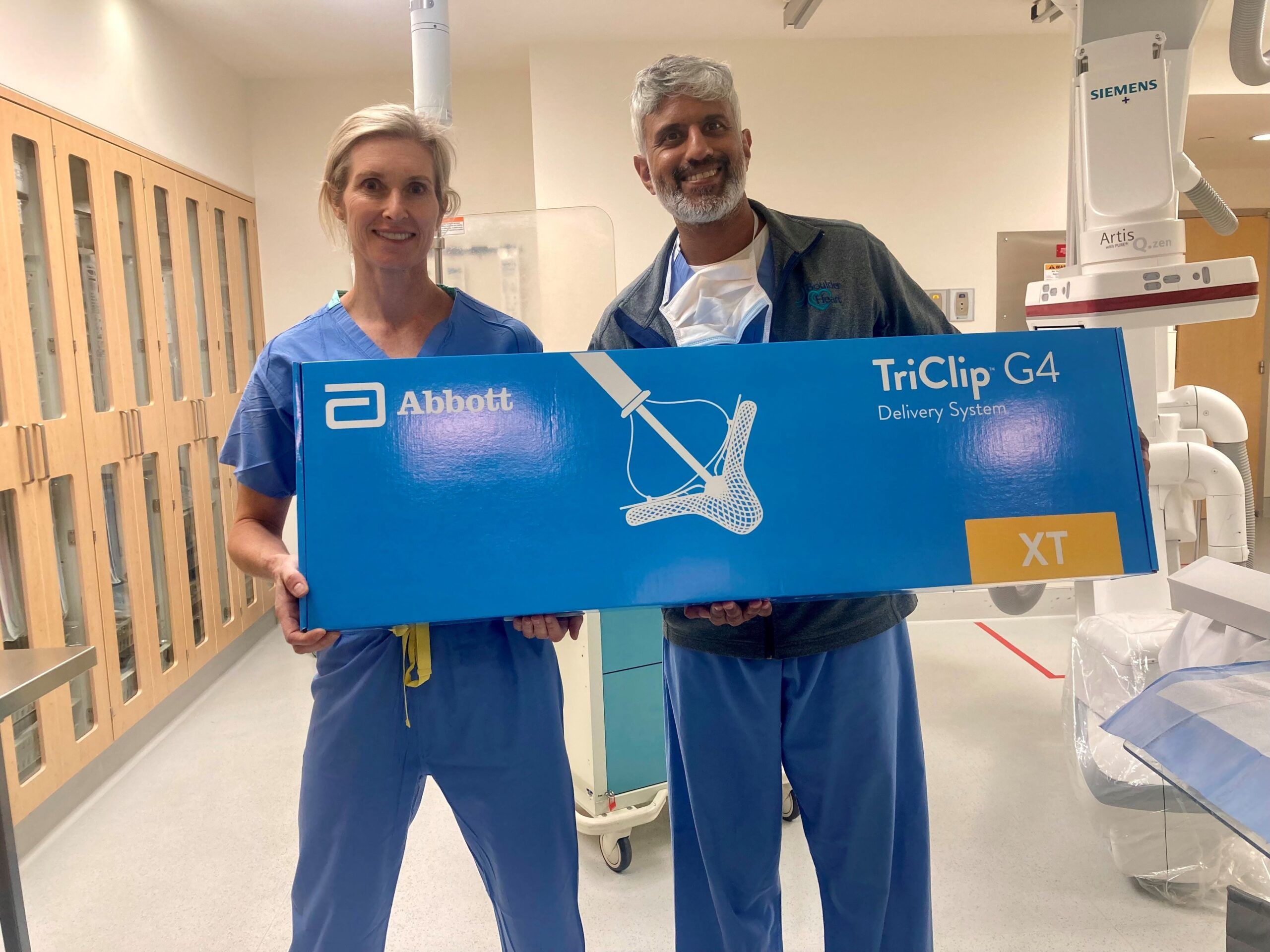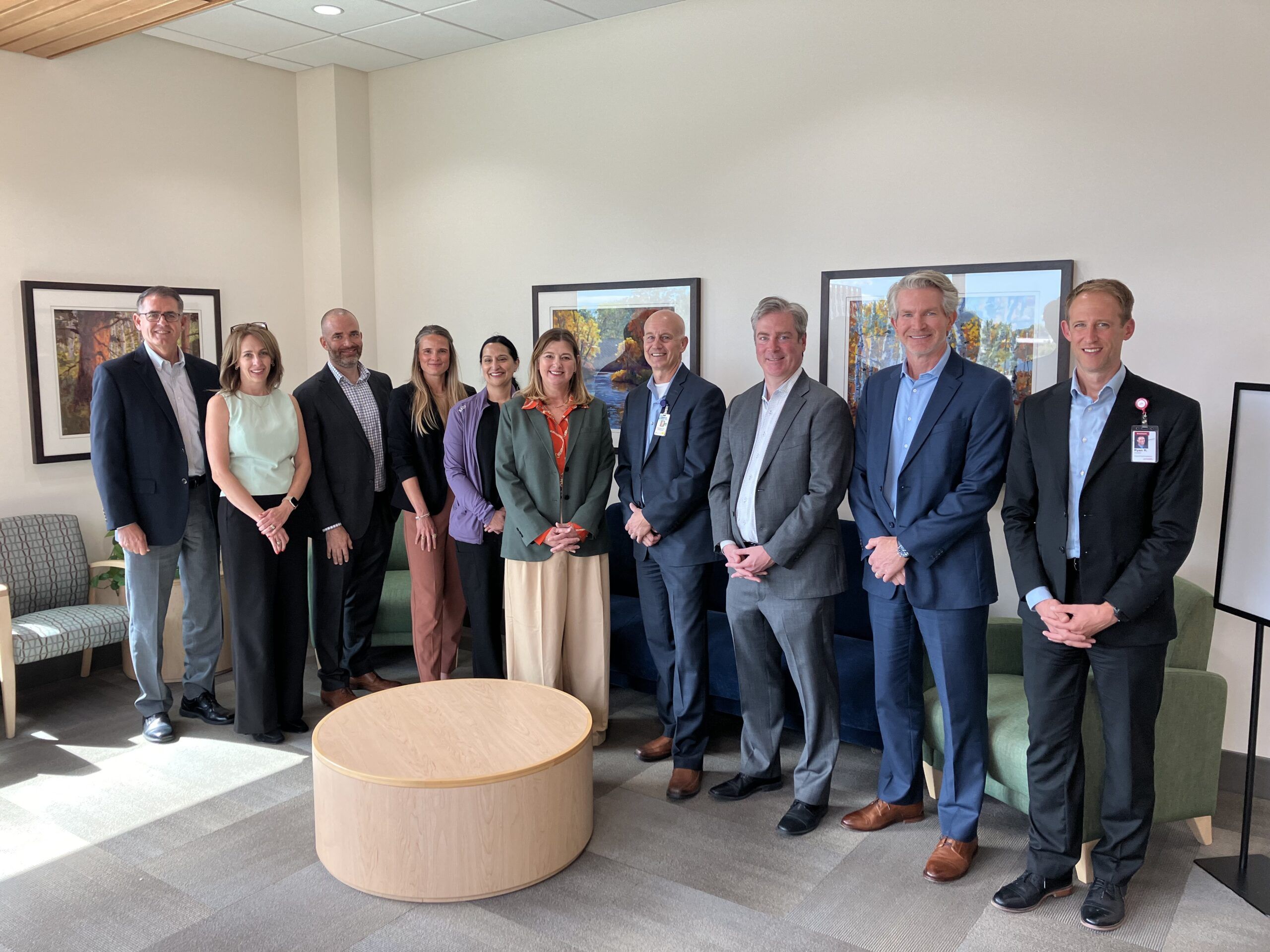CEO Roundtable: Boulder Valley health-care execs adjust to new normal amid pandemic
Nearly six months after the COVID-19 pandemic forced a statewide shutdown of most commerce in Colorado, company leaders in the Boulder area’s health-care scene have adapted to a new normal as fall and winter approaches.
Managing COVID patients today …
Jennifer Alderfer, the CEO of Good Samaritan Medical Center in Lafayette, noted that the region’s hospitals have been operating in an emergency command structure system for more than 200 days.
“One highlight I would share is just the incredible adaptability of the caregivers on the Good Sam team and the support we’ve had from the community and patients as we’ve worked through all of those process modifications,” she said.
SPONSORED CONTENT
Longmont United Hospital CEO Christina Johnson said providers are also far closer now with public health officials than they were in the past because knowing if an outbreak is coming is critical for hospitals trying to share resources where they are most needed.
“I think we’ve become much more data-driven with respect to community and understanding outbreaks early on,” she said.
Judy Ladd, executive director of the Boulder County Medical Society, echoed that partnership with Boulder-area public health officials.
“Around Sept. 11, they had identified with our people, with college students coming back on campus, that there was an increase in the number of cases occurring from dorms, fraternities and sororities,” she said.
However, that focus on immediate build-up of intensive-care space and the loss of more profitable elective procedures has cut millions in revenue for medical providers in recent months.
“The outcome of (refitting hospitals for COVID surges) was that across all the organizations that I represent, financial challenges were associated,” said Ben Dzialo, executive director of the Boulder Valley Care Network.
… and helping staffers stay available
Lonnie Cramer, president of UCHealth Longs Peak Hospital and Broomfield Hospital said the large proportion of women in the health-care field is a challenge, because many are balancing their medical work while raising children in a time where childcare is in critically short supply.
“We’re hearing that any kind of symptoms or sniffles seems to be a call-off, because daycares that are taking children are asking for parents to pick them up immediately,” he said.
Transitioning to telemedicine
Before COVID, the number of doctor visits that were done via video chat was about 6% or 7%, said Michael Gall, a senior director of large group sales at Kaiser Permanente. But after social distancing and stay-at-home became the norm, telehealth’s utilization rate for insurers and care providers skyrocketed to just under nine in 10 visits in the past couple of months.
“So you know, nothing like a global pandemic to really test and prove virtual care modality,” he said.
While doctors were advised to delay all but the most critical non-COVID care for patients in early days, health-care providers that provide exclusively elective procedures are starting to see a return to business.
Demand for foot care dropped to nearly zero in March, said BoulderCentre for Orthopedics CEO Cathy Higgins, and doctors initially didn’t want to use telemedicine all that often.
But the center’s business has returned to near pre-COVID levels, particularly because many of its doctors and patients are doing virtual visits for new patients and postoperative care. However, Higgins said it’s not clear if telemedicine will draw the same coverage from insurers as it does right now.
“We’re going to have to see how everybody handles telemedicine reimbursement because honestly, you know, you still need to get paid for your time, but it is a lot more efficient than people coming in and out of the office,” she said.
Sean Forster, CEO of the behavioral health center Centennial Peak Hospital in Louisville, said the vast majority of the hospital’s outpatients switched to telemedicine visits, and several more new clients are lining up needing help during this crisis time.
“We’re seeing a lot more patients who haven’t been seeing their outpatient providers, haven’t been taking potentially all of their correct medications,” he said. “Some of it has been access issues with providers; there’s been a lot of changes to schedules, availability, no fault to anybody.”
Crunch time coming for insurers
The final quarter of the year is the most busy for health insurance providers and brokers, as swaths of businesses are up for renewal of their group plans for the following year.
Kendra Johnson, director of benefits solutions at Flood & Peterson Insurance, said the beginning of the pandemic was “mass chaos” as business owners needed advice on how laying off or furloughing staff would affect their policies.
Companies with self-funded plans had even more headaches, as costs piled up this year between COVID-19-related intensive care visits and more demand for mental health services.
“We’re seeing those on our plans hit pretty hard, a couple hundred thousand dollar hits for some of our clients,” she said.
Matt Evelyn, vice president of employee benefits at GBS Benefits, said while employers have adjusted somewhat to working remotely or making accommodations to protect staff members in an in-person setting, the overall situation looks dire for businesses trying to figure out how to survive through the pandemic.
“I’ve seen our clients really scrambling and really stressed and really trying to figure out how many get to next month, let alone next year,” he said.
However, some insurance models are benefitting from the pandemic. The traditional insurance market has benefitted to the tune of doubling profits in recent months because so few people sought medical care that wasn’t COVID-related.
Clint Flanagan, CEO of Nextera Healthcare, said that is forcing thousands of primary care providers that were fee-for-service to go out of business, while direct primary care clinics that provide care for a set monthly, quarterly or annual fee are surviving because they don’t bill an in-person or telehealth visit any differently.
“We have more members in Nextera than we’ve ever had,” he said.
Non-COVID patients returning, but warily
There is one bright spot in particular: The volume of mothers coming in for childbirth has remained steady and is increasing in the past few months. While going into labor isn’t exactly an elective procedure that can be postponed, “Our (obstetric medicine) volumes have been relatively high and we anticipate that to get a little higher,” said Issac Sendros, CEO of Avista Adventist Hospital in Louisville. “I believe we’re projecting December, January, February of next year to be very busy months.”
Managing the cold months
Public health experts have raised alarms over the potential for a resurgence of COVID-19 cases in the fall and winter as it crosses over into the flu season, and because people will tend to congregate indoors where the virus more easily spreads.
Bruce Johnson, president and CEO of health-care supply-chain technology company Global Healthcare Exchange LLC in Louisville, said the market has changed for supplies after COVID caught many health-care systems off-guard, particularly in the personal protective equipment segment.
“The challenge right now would be in the current state, meaning now and between six months, we lack some of the demand forecasting that might help put a finer point, so that everybody would feel that the state of Colorado, or the government … that they have good visibility to where the demand was,” he said.
Deploying a vaccine
Although multiple vaccine candidates are in the final phases of clinical trials, a large skepticism remains among the populace in whether any approved inoculation would be safe and effective. The Pew Research Center estimates that as of early August, almost a third of Americans said they wouldn’t get one as soon as it’s available.
Robert Vissers, president and CEO of Boulder Community Health, said hospitals are already gearing up for distributing vaccines by buying refrigerators to hold the supplies and trying to leverage existing flu shot and testing site networks to make it easy for people to get vaccinated.
He said front-line medical workers and people most vulnerable to COVID-19 will be first in line to get the shot before it becomes widely available to the healthy population, which he hopes will give weeks and months of time to show that it is safe and effective.
However, he worries the ongoing struggles to get COVID testing equipment distributed out in the past several months will be similar when it’s time to distribute vaccines.
“We have not demonstrated the ability to mass produce, distribute and get it to the population in an efficient manner,” he said.
—
The CEO Roundtable is sponsored by Berg Hill Greenleaf Ruscitti, Plante Moran and Bank of Colorado.
© 2020 BizWest Media LLC
Nearly six months after the COVID-19 pandemic forced a statewide shutdown of most commerce in Colorado, company leaders in the Boulder area’s health-care scene have adapted to a new normal as fall and winter approaches.
Managing COVID patients today …
Jennifer Alderfer, the CEO of Good Samaritan Medical Center in Lafayette, noted that the region’s hospitals have been operating in an emergency command structure system for more than 200 days.
“One highlight I would share is just the incredible adaptability of the caregivers on the Good Sam team and the support we’ve had from the community and patients as…
THIS ARTICLE IS FOR SUBSCRIBERS ONLY
Continue reading for less than $3 per week!
Get a month of award-winning local business news, trends and insights
Access award-winning content today!




